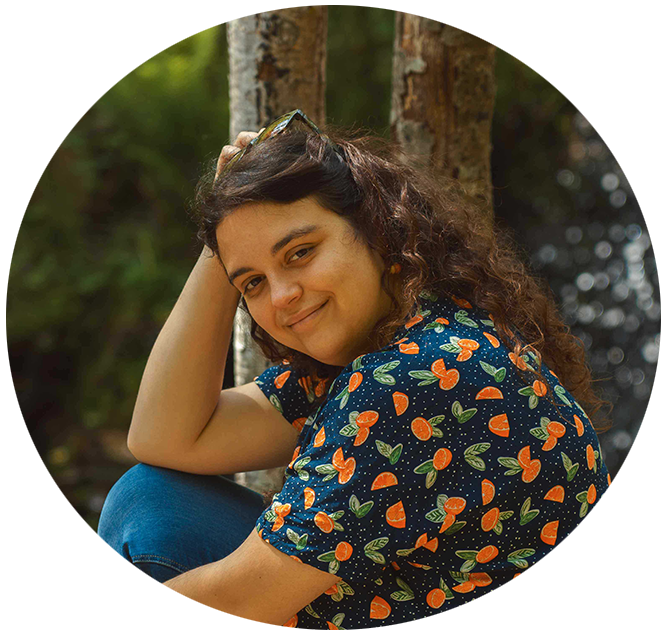Cristiana Sigona was born in Pozzallo, a small coastal town in Sicily. She is currently lab manager at the Laboratory of Biology and Ecology of Abundant Protists at the Institute of Evolutionary Biology (IBE: CSIC-UPF). Passionate about the sea and about discovering the smallest creatures that inhabit it, she has always been a very curious person.
She first studied Biodiversity and Ecological Sciences in Pisa, where she also did a master’s degree in Marine Biology. It was then that his tutor offered her an internship in Japan. “The first thing I thought was, why do I have to go to Japan and not to the United States like everyone else?”. But these first thoughts were erased the moment she landed in the country. “Their culture and their way of doing things opened my mind and made me grow as a person”.
Being able to work with and observe the samples is one of the things she enjoys most about her day-to-day work in the lab, but it is not an easy task: “It’s true that taking care of the cultures and maintaining them is a lot of work. But when you see them under the microscope, moving, alive… They are so beautiful that it makes up for all the work involved!”.
It has been more than three years since Cristiana came to Barcelona. And being so close to the sea and the Mediterranean climate makes her feel at home: “I almost feel Catalan”, she laughs after telling us that she seems to have found her place.
Want to know more about Cristiana and her work? Read on!
Is a scientist born or made?
Either born or made. You just need to be curious!
What is your field of study?
Marine biology. Most of the protists in the oceans are not yet known, in our lab we study plankton with a focus on unknown protist species that have not yet been cultured. From ocean samples that we collect ourselves (in a few weeks we are going to the Caribbean Sea!), we isolate protists that we then culture in a medium that mimics the oligotrophic conditions of the waters. We then analyse the 18S ribosomal DNA sequence, and compare it with the Tara ocean database. This allows us to see if our protist is among the most abundant in the ocean. If it is, we try to classify it and identify its form and functions.
What sparked your interest in science, and in your specific field?
During a protist ecology subject we looked at a drop of water under a microscope and what I saw was incredible! At that moment I realised that there is literally “a whole world” in a drop of water that we often forget is there. We don’t normally see microorganisms, but they are there, everywhere, and that fascinated me!
What kind of student were you as a child?
I was a tenacious student.
What would you be if you were not a scientist?
When I was designing the logo for our lab, I was very curious about illustration, so maybe I would become an illustrator… It helped me to relax my mind and get into a “zen” state. But I would also like to take up Japanese archery.
If you could travel in time and work on past or future science, what would you choose?
Future, always towards new discoveries and adventures!
What would you like to add to the phrase “finally solved”?
The full respect among people.
The best advice you have been given.
I would say there are two:
- “Gambatte!” which means “do your best” in Japanese. I learned it during my stay in Japan. When I had to learn new techniques that required calm and concentration and I was nervous, my colleagues would remind me that I just had to do my best. Thanks to this, I could face new challenges with a positive mindset that, even if I failed in the first few attempts, made me feel calm and think “well, I tried”.
- “Keep the beginner’s spirit”, which I learnt through “kyūdō”, Japanese archery. Keeping the beginner’s spirit makes you always ready to learn.
What book would you recommend?
“Zen in the art of archery” by Eugen Herrigel
Music?
Walk off the earth, a Canadian group.
Artist?
The Impressionists and Van Gogh.
Film or documentary?
Jurassic Park/World.
Thank you so much Cristiana! 🙂







